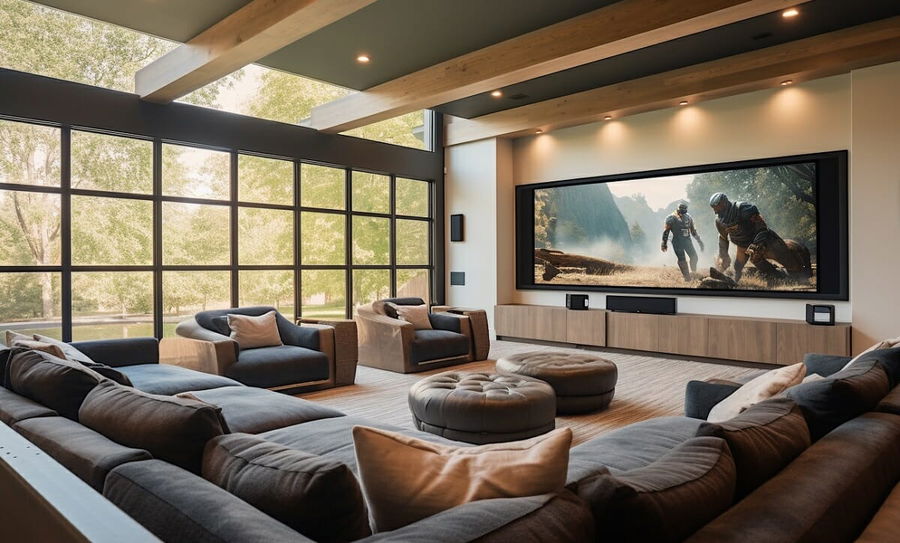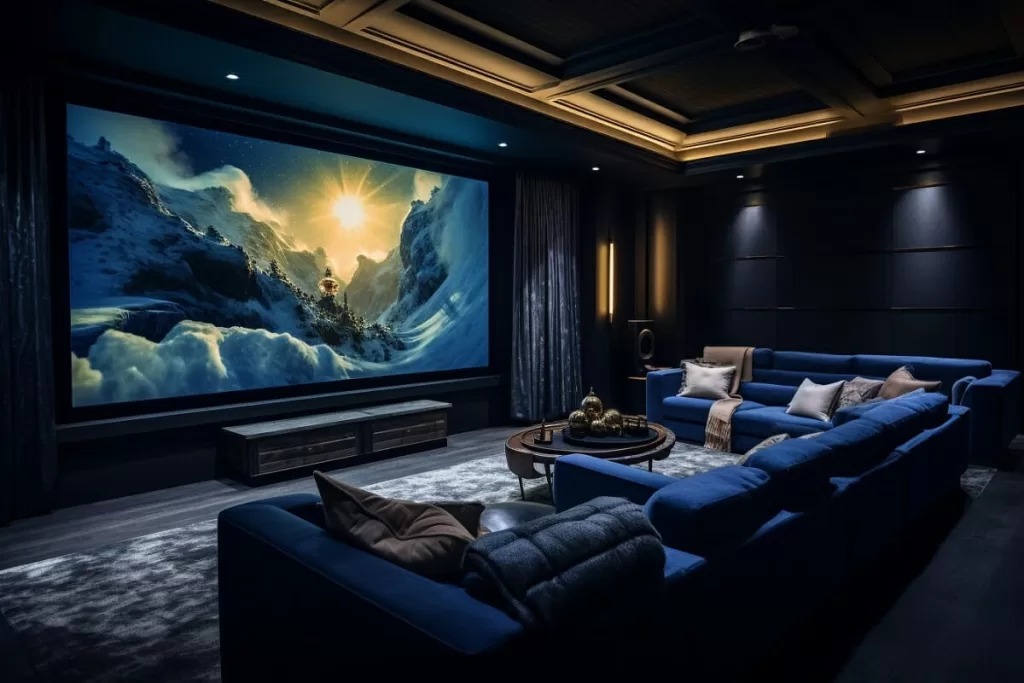Why Tampa Home Theater Installation Is a Life-Changer for Your Viewing Experience
Why Tampa Home Theater Installation Is a Life-Changer for Your Viewing Experience
Blog Article
Home Theater 101: Whatever You Required to Know for a Cinematic Experience in your home
Developing a home cinema that equals the motion picture experience of an industrial theatre includes cautious consideration of multiple parts, consisting of screen selection, sound systems, and area design. Whether you are considering the optimal screen dimension or the ins and outs of surround sound, recognizing these principles is vital.
Selecting the Right Screen
When establishing a home movie theater, selecting the appropriate screen can make or break the watching experience - tampa home theater installation. The display acts as the focal point of your configuration, influencing picture quality, viewing angles, and general visual. Key variables to take into consideration include screen resolution, kind, and dimension
First, figure out the appropriate screen dimension based on your space dimensions and seating distance. Next, select in between various screen kinds, such as fixed-frame, motorized, or retracting displays, each offering distinct advantages.
Resolution is one more critical element. For an absolutely immersive experience, consider a screen created for 4K or also 8K content, guaranteeing intensity and quality. In addition, consider the screen's gain, which affects brightness and contrast; a higher gain can improve illumination in well-lit spaces, while a reduced gain may be better for darker environments.
Selecting Audio Equipment
Audio equipment is an important part of any kind of home cinema system, dramatically enhancing the overall viewing experience. The selection of audio gear can determine the depth, quality, and immersion of audio, crucial for creating a cinematic atmosphere.
When choosing audio tools, take into consideration a border audio system, which normally consists of a receiver, several speakers, and a subwoofer. A 5.1 or 7.1 channel system is advised, where the initial number stands for the speakers and the second the speaker, giving an immersive soundscape. The receiver is the heart of the system, handling audio and video signals, and should support modern styles like Dolby Atmos for an enhanced spatial experience.
Quality speakers are essential; seek versions that use a balanced sound account with great bass reaction. Floor-standing speakers can generate richer noise, while bookshelf alternatives save space. In addition, think about wireless alternatives for simplicity of installation, although wired systems often supply remarkable performance.

Optimum Seating Plans
Producing a suitable home movie theater experience hinges considerably on optimal seating arrangements. The setup of seats plays an essential duty in both convenience and seeing high quality, directly impacting the overall motion picture experience.
First, take into consideration the screen size and watching range. A typical guideline is to place seats at a distance roughly 1.5 to 2.5 times the diagonal dimension of the screen. This ensures an immersive experience without stressing the eyes.
Next, altitude is vital. If your seats is in a tiered layout, the back rows must be more than the front to avoid blockages. For level seating, ensure that the front row is not also near to the display, and that every person has a clear line of view.
Furthermore, consider the plan in terms of social dynamics. Team seating can improve the communal experience, while private seats may be liked for personal watching.

Lastly, focus on comfort with ergonomic seats that supports prolonged watching periods. Incorporating recliner chairs or supported seats can considerably boost the experience, making the home theater a favored location for both home entertainment and leisure.
Lighting and Ambiance
Efficient lights and setting are vital parts of a well-designed home movie theater, as they substantially affect the seeing experience. The ideal lights can boost the cinematic feel, while bad options can take away from it. For optimal results, think about a layered lights approach that includes ambient, task, and accent illumination.
Ambient illumination provides general lighting, making certain that the room is not completely dark, which can strain the eyes. Dimmer switches are highly recommended, permitting modifications based upon the material being checked out. Job lights, such as wall surface sconces or flooring lights, uses practical lighting for activities like reading or navigating the space without disrupting the overall atmosphere.
Accent lights can view it be utilized to highlight architectural features or develop centerpieces, adding depth and passion to the space. LED strip lights behind screens or along racks can supply a refined glow that enhances the aesthetic experience without overwhelming the viewer.

Wiring and Installation Tips
A well-planned electrical wiring configuration is vital for achieving ideal performance in your home theater system. Correct circuitry not just guarantees premium audio and video clip signals yet likewise improves the general aesthetic of your room. Begin by drawing up your design, identifying where each part will certainly be placed, including your display, audio speakers, and receiver.
When selecting cables, focus on premium, appropriately determined electrical wiring to decrease signal loss. HDMI cables must be utilized for video connections, while audio speaker cable should match the requirements of your speakers and amplifier. Choose in-wall ranked cables to follow safety criteria and maintain a tidy look.
:strip_icc()/heritage-lake-model-2524d1f5bc974300a65f3187a6ebd929.png)
Final Thought
In summary, developing an extraordinary home theater experience calls for careful consideration of numerous components, consisting of display choice, audio devices, seating arrangements, illumination, and circuitry. Each element plays a critical duty in attaining optimal efficiency and atmosphere, eventually improving the satisfaction of home entertainment. By prioritizing these elements, a look what i found motion picture environment can be efficiently duplicated, enabling immersive viewing experiences that equal conventional theater settings. Interest to detail in each area is essential for total contentment.
Creating a home theater that matches the cinematic experience of a commercial theatre entails mindful factor to consider of several elements, including display option, audio systems, and space format.When setting up a home theater, selecting the ideal display can make or break the watching experience. Next off, choose between various screen types, such as fixed-frame, mechanized, or retractable displays, each offering unique benefits. For an absolutely immersive experience, think about a display developed for 4K or also 8K material, making certain intensity and quality.In recap, developing an exceptional home movie click to investigate theater experience needs cautious consideration of numerous aspects, consisting of screen choice, audio devices, seating plans, lighting, and circuitry.
Report this page